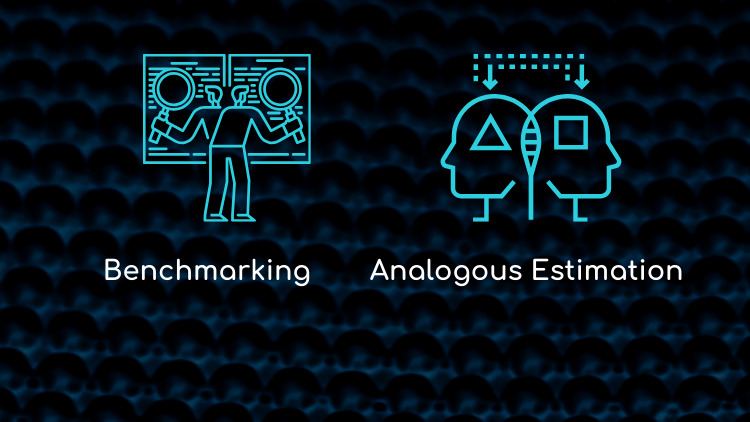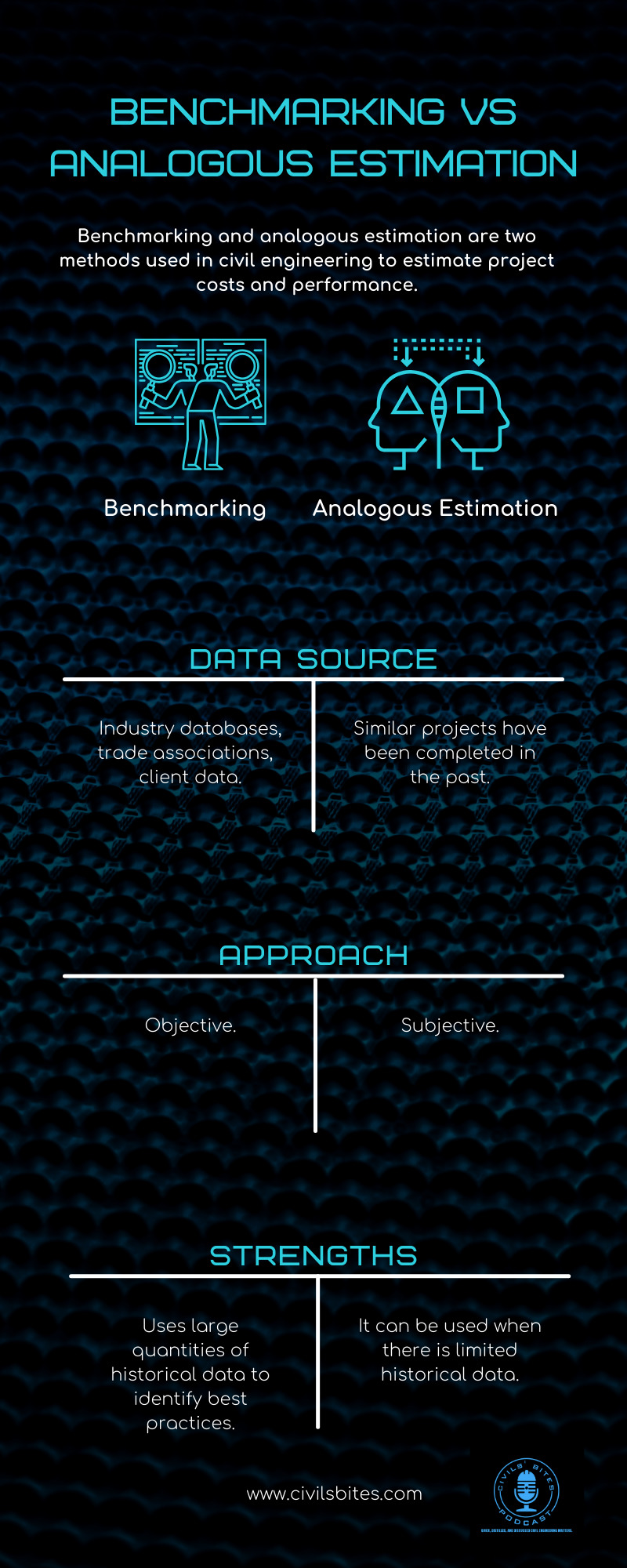
Benchmarking or analogous estimation: two distinct methods of estimation. But which is the most appropriate in different scenarios? Carlo Borri of Arcadis Infrastructure has the answer.
Early cost estimation in civil engineering is crucial in project feasibility and decision-making. Among various techniques, benchmarking and analogous estimation stand out for their simplicity and reliance on existing data. However, understanding their nuances, particularly in data research, evaluation and output accuracy, is critical to using them effectively.
Data research and evaluation
Both methods leverage external data from similar projects. Benchmarking typically draws on industry databases, cost indices or publications, offering broader cost trends across project types and locations.
Analogous estimation focuses on finding close ‘parallels’ (analogues) to the targeted project, often within the same region or with similar features and complexities. The data research, therefore, is more targeted at analogous estimation, requiring a deeper understanding of the project specifics to identify accurate analogues.

Data evaluation, however, is crucial in both methods. Simply using average costs from benchmarks or analogues can be misleading. Factors like project size, scope, site conditions, construction methods, and market fluctuations must be considered. Statistical analysis, adjustments for these factors, and sensitivity analysis become essential to refining the raw data into reliable estimates. References like the Royal Institution of Chartered Surveyors (RICS) Cost Management Guidance Note 4 offer valuable guidance on data evaluation techniques.
Accuracy and output
It’s important to remember that benchmarking and analogous estimation provide cost ranges or ballparks rather than definitive figures. They lack the detailed granularity of bottom-up estimates, which meticulously break down project components and costs.
Rough order of magnitude accuracy, expected in early feasibility studies, can be achieved through these methods, but not the level of precision needed for detailed budgeting or tendering.
Project suitability and design maturity
The choice between benchmarking and analogous estimation depends heavily on the design maturity stage and project type. Benchmarking shines in the initial stages when limited project information is available, and the project is repetitive, such as a footbridge over the rail. It offers a quick overview of potential cost ranges across different project types and locations.
Analogous estimation becomes more relevant as the design is still immature and specific details/features emerge. Finding close analogues allows for a more refined cost range specific to the project’s characteristics.
In my opinion, the analogous estimation method may be suitable for complex or bespoke projects with unique features. Additionally, projects with readily available historical data from similar undertakings within the organisation may benefit from internal cost databases, reducing reliance on external benchmarks.
Conclusion
Benchmarking and analogous estimation are valuable tools for early cost estimation in civil engineering. By understanding their data research and evaluation requirements, output limitations, and suitability for different project types and design stages, civil engineers can leverage these methods effectively to inform decision-making and ensure project feasibility.
Remember, these methods provide a starting point, not a definitive answer. As the project progresses and design details solidify, more refined estimation techniques should be employed to achieve greater accuracy and cost control.
References
- Royal Institution of Chartered Surveyors. (2017). Cost Management Guidance Note 4: Early-stage cost estimating and appraisal.
- Flanagan, R, & Ashcroft, J (2015). How accurate is your construction cost estimate? International Journal of Project Management, 33(3), 692-707.
- Dell’Isola, A (2015). A practical guide to construction cost estimating. John Wiley & Sons.
Carlo Borri MCIOB is a director, team leader, project manager and chartered construction manager specialising in major project and programme development service delivery for Arcadis Infrastructure. He also produces the Civilbites podcast.
Don’t miss out on BIM and digital construction news: sign up to receive the BIMplus newsletter.














